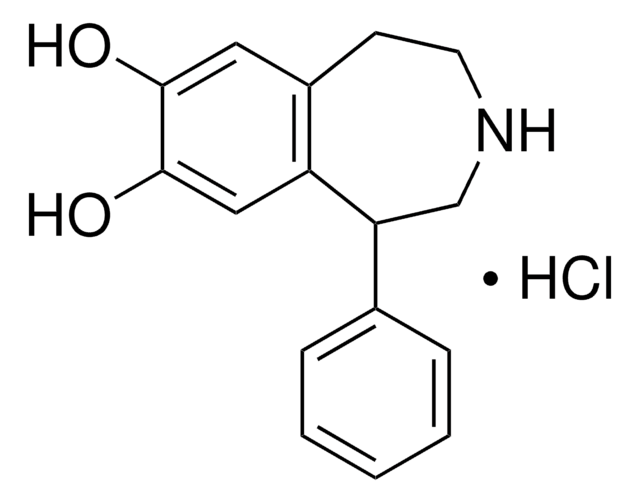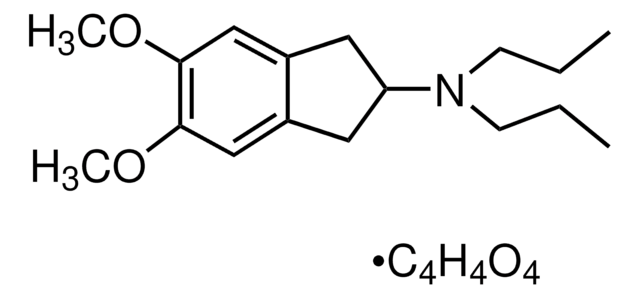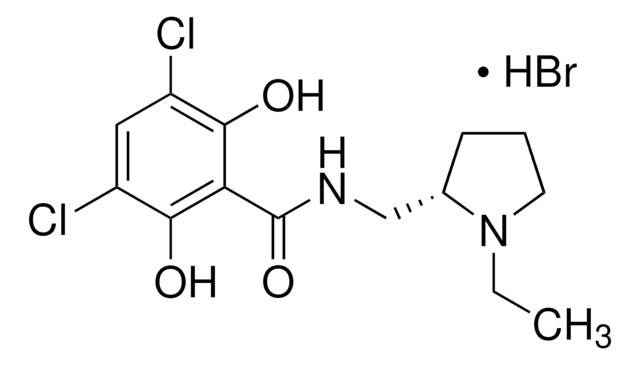D054
R(+)-SCH-23390 hydrochloride
≥98% (HPLC), solid
Synonim(y):
R(+)-7-Chloro-8-hydroxy-3-methyl-1-phenyl-2,3,4,5-tetrahydro-1H-3-benzazepine hydrochloride
About This Item
Polecane produkty
Poziom jakości
Próba
≥98% (HPLC)
Postać
solid
aktywność optyczna
[α]/D +32.1°, c = 1 in DMF(lit.)
warunki przechowywania
desiccated
protect from light
kolor
white
rozpuszczalność
H2O: >5 mg/mL
ciąg SMILES
Cl[H].CN1CCc2cc(Cl)c(O)cc2[C@H](C1)c3ccccc3
InChI
1S/C17H18ClNO.ClH/c1-19-8-7-13-9-16(18)17(20)10-14(13)15(11-19)12-5-3-2-4-6-12;/h2-6,9-10,15,20H,7-8,11H2,1H3;1H/t15-;/m1./s1
Klucz InChI
OYCAEWMSOPMASE-XFULWGLBSA-N
informacje o genach
human ... DRD1(1812)
Szukasz podobnych produktów? Odwiedź Przewodnik dotyczący porównywania produktów
Powiązane kategorie
Zastosowanie
- for intraperitoneal injection into experimental rats to study the role of D1 receptor in sensitization
- as a D1 receptor-selective antagonist for intracranial drug infusions
- as an antagonist of D1 receptor to study its effect on learning ability in fish
Działania biochem./fizjol.
Cechy i korzyści
Informacje prawne
Kod klasy składowania
13 - Non Combustible Solids
Klasa zagrożenia wodnego (WGK)
WGK 3
Temperatura zapłonu (°F)
Not applicable
Temperatura zapłonu (°C)
Not applicable
Środki ochrony indywidualnej
Eyeshields, Gloves, type N95 (US)
Certyfikaty analizy (CoA)
Poszukaj Certyfikaty analizy (CoA), wpisując numer partii/serii produktów. Numery serii i partii można znaleźć na etykiecie produktu po słowach „seria” lub „partia”.
Masz już ten produkt?
Dokumenty związane z niedawno zakupionymi produktami zostały zamieszczone w Bibliotece dokumentów.
Klienci oglądali również te produkty
Nasz zespół naukowców ma doświadczenie we wszystkich obszarach badań, w tym w naukach przyrodniczych, materiałoznawstwie, syntezie chemicznej, chromatografii, analityce i wielu innych dziedzinach.
Skontaktuj się z zespołem ds. pomocy technicznej









